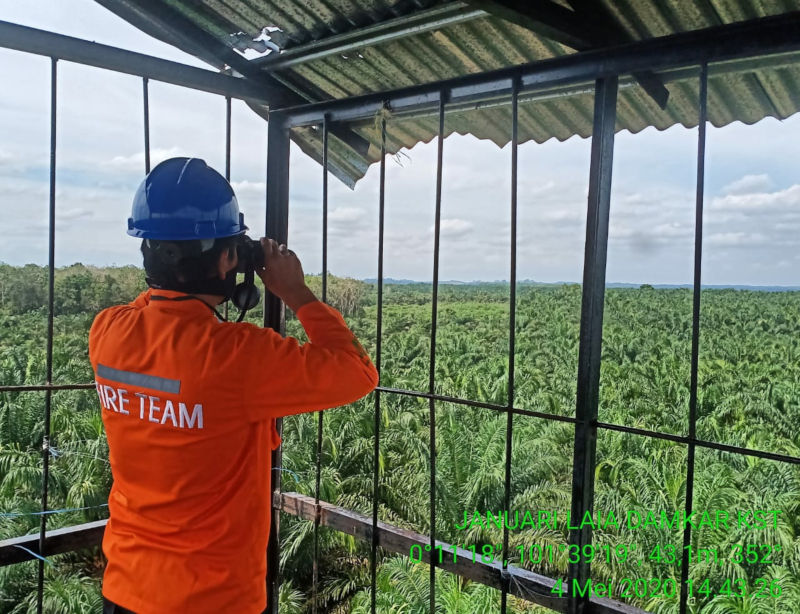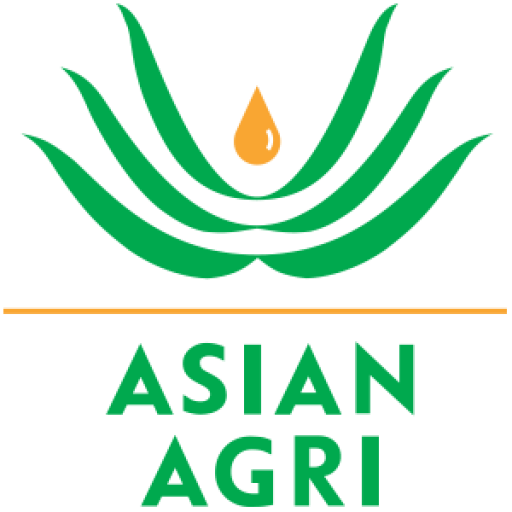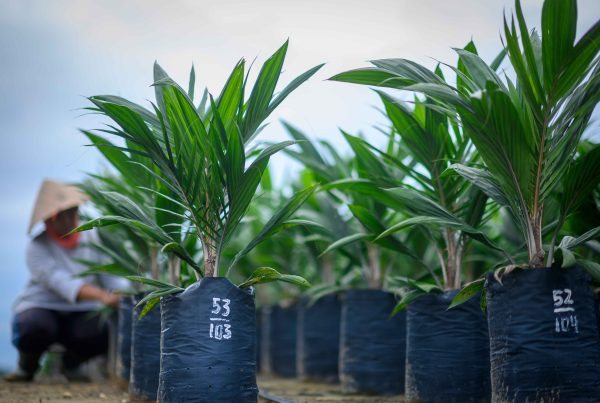The Covid-19 pandemic has had a significant impact on many daily activities, with some even having to stop altogether due to physical distancing rules.
However, these limitations have not stopped Asian Agri’s duties in ensuring that the nearby villages and communities in our operational areas in Pelalawan Regency, Riau remain free and safe from fires and haze.
The Asian Agri Fire Free Village Program (FFVP) team continues to work with Fire Free Village Crew Leaders to reduce any risk of fires in fire-prone villages. With firefighting being a team effort, there is a real need to optimise the use of technology and communications systems in coordinating fire prevention efforts.

One way the FFVP team is doing this is ensuring that everyone keeps an eye on hot spots in the area by using the ‘Lapan: Fire Hotspot’ smartphone app which provides real-time info on hot spot locations by combining data from Google Earth maps and the National Institute of Aviation and Space (LAPAN)’s own detection system.
Of course, no app can replace the need for the fire team members to be physically present in the event of any fires, especially when several of the fire-prone villages are located in extremely remote areas, making them difficult to access.
Hafiz Sinaga, Asian Agri’s FFVP Manager, said it is often difficult to even get access to the Internet in these locations.
Although hotspots are the main points of reference in detecting potential forest and land fires, they are merely indicators. Hotspots show up on satellite imagery when there are areas of high heat, which may not necessarily mean there are fires. ‘False hotspots’ include industrial areas with plenty of metal parts which may emit heat during a hot a day, volcanic areas and mines.
Sometimes, satellite imagery displayed in the app can show 12 hotspots in one area, Hafiz said.
“Therefore, our fire team members have to visit these villages in person to check and ensure there are actually no fires,” said Hafiz.
“Of course, they are doing these visits at the moment in line with government recommendations related to physical distancing and the use of special PPE in preventing the spread of the Covid-19 virus,” he added.
All members of the patrolling teams must always wear cloth face masks and helmets, and ensure that they wash their hands thoroughly with soap after each patrol.
Hafiz said that the FFVP team also works with Asian Agri’s Learning and Development (L&D) team when it comes to in-person patrol checks at the villages.
“When we follow-up in areas where hotspots have been detected earlier on the LAPAN app, we get help from the L&D team who provide detailed coordinates regarding the exact locations of these hotspots,” Hafiz explained.
There are three levels of hotspots. The lowest level of 0 to 30 per cent means the potential for fire in a particular hotspot is still low, and satellite image of this hotspots appears in green. A 50 to 80 per cent level hotspot in yellow indicates the potential for moderate fire, while red colour hotspots of level 90 to 100 per cent means the potential for fire is high.
“Analysis by the L&D team determines whether full deployment is required by sending ground teams and fire equipment to deal with a fire source,” Hafiz said.
Hafiz said that all hotspot data have to be processed as quickly as possible by the L&D team, so that any follow-ups that need to be carried out by the fire team can be done with as little delay as possible.
“It’s all possible with the use of increasingly sophisticated technology and support from a consistently agile and responsive team,” he said.
The teams are especially attentive with their reporting and patrolling duties during the dry season, when potential fire risk for is inevitably higher.
“During the dry season, we increase the intensity of our patrols especially in the difficult to reach villages with limited Internet access,” Hafiz said.
Yet, while technology and a reliable team can greatly assist in the early detection of fires, the most important aspect of firefighting is still prevention by continuing to educate and convince villagers not to practice land burning and also to respond to hotspots in their respective regions.
“Public awareness is really the key to fighting fires. Direct community involvement, especially those living in fire-prone villages, forms the core of good and effective coordination in preventing forest and land fires.
“For me personally, the satisfaction comes when people are aware that our hard work and the part they can play in fire prevention is all for our safety and health,” Hafiz said.
Since the start of 2020, there have been zero forest and land fires reported in the Pelalawan Regency.



